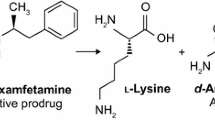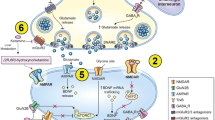Abstract
Rationale
The efficacy of nicotine replacement therapy (NRT) for smoking cessation is limited. One reason for this limited efficacy may be that typical serum nicotine concentrations provided by NRT do not match the peak arterial nicotine concentrations achieved from smoking.
Objective
The purpose of the present study was to determine whether continuous nicotine infusion at a rate producing serum nicotine concentrations that match the estimated peak arterial nicotine concentrations associated with nicotine self-administration (NSA) in rats produces greater suppression of NSA than lower infusion rates.
Methods
The effects of continuous nicotine infusion were studied by intravenously administering nicotine at various rates (1.0, 3.0, and 8.0 mg/kg per day) to rats concurrently self-administering nicotine (0.03 mg/kg per infusion) during 23-h sessions or cocaine (0.17 mg/kg per infusion) during 2-h sessions.
Results
Continuous nicotine infusion suppressed NSA in a rate-related fashion. NSA was suppressed by 17, 50, and 73% at infusion rates of 1.0, 3.0 and 8.0 mg/kg per day, respectively. The 8.0-mg/kg per day infusion rate, which provided venous serum nicotine concentrations equaling the peak arterial concentrations associated with NSA, suppressed NSA to a greater extent than lower infusion rates. The 8.0-mg/kg per day nicotine infusion rate had no effect on cocaine-maintained responding, demonstrating that its effects were specific for suppression of NSA. This infusion rate provided a mean percentage replacement of nicotine from NSA of more than 700%. Reacquisition of NSA after suppression by the two highest infusion rates was delayed compared with reacquisition after saline extinction.
Conclusions
Continuous nicotine infusion produced an infusion rate-related suppression of NSA that was greatest when the infusion provided nicotine doses and venous serum concentrations substantially higher than those typically associated with NRT in humans.





Similar content being viewed by others
References
Benowitz NL (1993) Nicotine replacement therapy. What has been accomplished—can we do better? Drugs 45:157–170
Benowitz NL, Jacob P III (1984) Daily intake of nicotine during cigarette smoking. Clin Pharmacol Ther 35:499–504
Benowitz NL, Jacob P III (1990) Intravenous nicotine replacement suppresses nicotine intake from cigarette smoking. J Pharmacol Exp Ther 254:1000–1005
Benowitz NL, Jacob P III, Jones RT, Rosenberg J (1982a) Interindividual variability in the metabolism and cardiovascular effects of nicotine in man. J Pharmacol Exp Ther 221:368–372
Benowitz NL, Jacob P III, Savanapridi C (1987) Determinants of nicotine intake while chewing nicotine polacrilex gum. Clin Pharmacol Ther 41:467–473
Benowitz NL, Kuyt F, Jacob PP III (1982b) Circadian blood nicotine concentrations during cigarette smoking. Clin Pharmacol Ther 32:758–764
Benowitz NL, Kuyt F, Jacob P III (1984) Influence of nicotine on cardiovascular and hormonal effects of cigarette smoking. Clin Pharmacol Ther 36:74–81
Benowitz NL, Zevin S, Jacob P III (1998) Suppression of nicotine intake during ad libitum cigarette smoking by high-dose transdermal nicotine. J Pharmacol Exp Ther 287:958–962
Bozarth MA, Wise RA (1985) Toxicity associated with long-term intravenous heroin and cocaine self-administration in the rat. JAMA 254:81–83
Corrigall WA, Coen KM (1989) Nicotine maintains robust self-administration in rats on a limited-access schedule. Psychopharmacology 99:473–478
Dale LC, Hurt RD, Offord KP, Lawson GM, Croghan IT, Schroeder DR (1995) High-dose nicotine patch therapy. Percentage of replacement and smoking cessation. JAMA 274:1353-1358
Donny EC, Caggiula AR, Rowell PP, Gharib MA, Maldovan V, Booth S, Mielke MM, Hoffman A, McCallum S (2000) Nicotine self-administration in rats: estrous cycle effects, sex differences and nicotinic receptor binding. Psychopharmacology 151:392–405
Fiore MC (2000) US public health service clinical practice guideline: treating tobacco use and dependence. Respir Care 45:1200–1262
Fiore MC, Smith SS, Jorenby DE, Baker TB (1994) The effectiveness of the nicotine patch for smoking cessation. A meta-analysis. JAMA 271:1940–1947
Foulds J, Stapleton J, Feyerabend C, Vesey C, Jarvis M, Russell MA (1992) Effect of transdermal nicotine patches on cigarette smoking: a double blind crossover study. Psychopharmacology 106:421–427
Fredrickson PA, Hurt RD, Lee GM, Wingender L, Croghan IT, Lauger G, Gomez-Dahl L, Offord KP (1995) High-dose transdermal nicotine therapy for heavy smokers: safety, tolerability and measurement of nicotine and cotinine levels. Psychopharmacology 122:215–222
Gibaldi M, Perrier D (1982) Pharmacokinetics, 2nd edn. Dekker, New York
Gourlay SG, Benowitz NL (1997) Arteriovenous differences in plasma concentration of nicotine and catecholamines and related cardiovascular effects after smoking, nicotine nasal spray, and intravenous nicotine. Clin Pharmacol Ther 62:453–463
Henningfield JE, Stapleton JM, Benowitz NL, Grayson RF, London ED (1993) Higher levels of nicotine in arterial than in venous blood after cigarette smoking. Drug Alcohol Depend 33:23–29
Hieda Y, Keyler DE, VanDeVoort JT, Niedbala RS, Raphael DE, Ross CA, Pentel PR (1999) Immunization of rats reduces nicotine distribution to brain. Psychopharmacology 143:150–157
Hughes JR (1995) Treatment of nicotine dependence. Is more better? JAMA 274:1390–1391
Hughes JR, Lesmes GR, Hatsukami DK, Richmond RL, Lichtenstein E, Jorenby DE, Broughton JO, Fortmann SP, Leischow SJ, McKenna JP, Rennard SI, Wadland WC, Heatley SA (1999) Are higher doses of nicotine replacement more effective for smoking cessation? Nicotine Tobacco Res 1:169–174
Hurt RD, Dale LC, Fredrickson PA, Caldwell CC, Lee GA, Offord KP, Lauger GG, Marusic Z, Neese LW, Lundberg TG (1994) Nicotine patch therapy for smoking cessation combined with physician advice and nurse follow-up. One-year outcome and percentage of nicotine replacement. JAMA 271:595–600
Jorenby DE, Smith SS, Fiore MC, Hurt RD, Offord KP, Croghan IT, Hays JT, Lewis SF, Baker TB (1995) Varying nicotine patch dose and type of smoking cessation counseling. JAMA 274:1347–1352
Keyler DE, Hieda Y, St Peter J, Pentel PR (1999) Altered disposition of repeated nicotine doses in rats immunized against nicotine. Nicotine Tobacco Res 1:241–249
Kyerematen GA, Taylor LH, deBethizy JD, Vesell ES (1988) Pharmacokinetics of nicotine and 12 metabolites in the rat. Application of a new radiometric high performance liquid chromatography assay. Drug Metab Dispos 16:125–129
Lawson GM, Hurt RD, Dale LC, Offord KP, Croghan IT, Schroeder DR, Jiang NS (1998) Application of serum nicotine and plasma cotinine concentrations to assessment of nicotine replacement in light, moderate, and heavy smokers undergoing transdermal therapy. J Clin Pharmacol 38:502–509
LeSage MG, Keyler DE, Shoeman D, Raphael D, Collins G, Pentel PR (2002) Continuous nicotine infusion reduces nicotine self-administration in rats with 23-h/day access to nicotine. Pharmacol Biochem Behav 72:279–289
Malin DH, Lake JR, Newlin-Maultsby P, Roberts LK, Lanier JG, Carter VA, Cunningham JS, Wilson OB (1992) Rodent model of nicotine abstinence syndrome. Pharmacol Biochem Behav 43:779–784
Mansbach RS, Chambers LK, Rovetti CC (2000) Effects of the competitive nicotinic antagonist erysodine on behavior occasioned or maintained by nicotine: comparison with mecamylamine. Psychopharmacology 148:234–242
Mathieu-Kia AM, Kellogg SH, Butelman ER, Kreek MJ (2002) Nicotine addiction: insights from recent animal studies. Psychopharmacology 162:102–118
Miller RP, Rotenberg KS, Adir J (1977) Effect of dose on the pharmacokinetics of intravenous nicotine in the rat. Drug Metab Dispos 5:436–443
Perkins KA, Grobe JE, Stiller RL, Fonte C, Goettler JE (1992) Nasal spray nicotine replacement suppresses cigarette smoking desire and behavior. Clin Pharmacol Ther 52:627–634
Rose JE, Corrigall WA (1997) Nicotine self-administration in animals and humans: similarities and differences. Psychopharmacology 130:28–40
Rose JE, Behm FM, Westman EC, Coleman RE (1999) Arterial nicotine kinetics during cigarette smoking and intravenous nicotine administration: implications for addiction. Drug Alcohol Depend 56:99–107
Russell MA, Stapleton JA, Feyerabend C, Wiseman SM, Gustavsson G, Sawe U, Connor P (1993) Targeting heavy smokers in general practice: randomised controlled trial of transdermal nicotine patches. BMJ 306:1308–1312
Shoaib M, Stolerman IP (1999) Plasma nicotine and cotinine levels following intravenous nicotine self-administration in rats. Psychopharmacology 143:318–321
Stolerman IP (1999) Inter-species consistency in the behavioural pharmacology of nicotine dependence. Behav Pharmacol 10:559–580
Stratton K, Shetty P, Wallace R, Bondurant S (2001) Clearing the smoke: the science base for tobacco harm reduction—executive summary. Tobacco Control 10:189–195
Sweeney CT, Fant RV, Fagerstrom KO, McGovern JF, Henningfield JE (2001) Combination nicotine replacement therapy for smoking cessation: rationale, efficacy and tolerability. CNS Drugs 15:453–467
Tuncok Y, Hieda Y, Keyler DE, Brown S, Ennifar S, Fattom A, Pentel PR (2001) Inhibition of nicotine-induced seizures in rats by combining vaccination against nicotine with chronic nicotine infusion. Exp Clin Psychopharmacol 9:228–234
Valentine JD, Hokanson JS, Matta SG, Sharp BM (1997) Self-administration in rats allowed unlimited access to nicotine. Psychopharmacology 133:300–304
Winders SE, Grunberg NE, Benowitz NL, Alvares AP (1998) Effects of stress on circulating nicotine and cotinine levels and in vitro nicotine metabolism in the rat. Psychopharmacology 137:383–390
Acknowledgements
The authors thank Heather Wendorf, Mathew Dufek, Danielle Burroughs, and Donna Raphael for their excellent technical assistance. Supported by NIDA/NCI Transdisciplinary Tobacco Use Research Center grant P50-DA13333.
Author information
Authors and Affiliations
Corresponding author
Rights and permissions
About this article
Cite this article
LeSage, M.G., Keyler, D.E., Collins, G. et al. Effects of continuous nicotine infusion on nicotine self-administration in rats: relationship between continuously infused and self-administered nicotine doses and serum concentrations. Psychopharmacology 170, 278–286 (2003). https://doi.org/10.1007/s00213-003-1539-2
Received:
Accepted:
Published:
Issue Date:
DOI: https://doi.org/10.1007/s00213-003-1539-2




